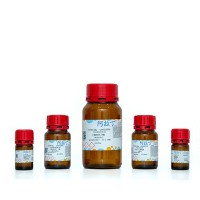Microsphere Surface Protein Determination Using Flow Cytometry
互联网
- Abstract
- Table of Contents
- Materials
- Figures
- Literature Cited
Abstract
This unit describes an extrinsic staining protocol using the amine?reactive CBQCA dye to measure the amount of protein on the surface of a microsphere. This approach is novel in that it allows microspheres bearing proteins without known binding partners to be accurately quantified on a flow cytometer.
Keywords: flow cytometry; surface chemistry; protein; microspheres
Table of Contents
- Basic Protocol 1: Microsphere Surface Protein Determination
- Support Protocol 1: Preparation of Protein Microsphere Standards by Coupling at pH 5.5
- Alternate Protocol 1: Preparation of Protein Microsphere Standards by Coupling with Activation at pH 6.5
- Support Protocol 2: Characterization of Protein Microsphere Standards
- Reagents and Solutions
- Commentary
- Literature Cited
- Figures
- Tables
Materials
Basic Protocol 1: Microsphere Surface Protein Determination
Materials
Support Protocol 1: Preparation of Protein Microsphere Standards by Coupling at pH 5.5
Materials
Alternate Protocol 1: Preparation of Protein Microsphere Standards by Coupling with Activation at pH 6.5
Support Protocol 2: Characterization of Protein Microsphere Standards
Materials
|
Figures
-
Figure 13.2.1 Excitation (solid) and emission (dashed) spectra of ATTO‐TAG CBQCA. View Image -
Figure 13.2.2 CBQCA staining of protein microsphere standards and linear fit. View Image -
Figure 13.2.3 Measurement of specific binding of a solution‐phase protein to a conjugated microsphere set via the use of a fluorescent ligand. View Image -
Figure 13.2.4 Linear fit of a MESF (molecules of equivalent soluble fluorochrome) standard curve using fluorescein isothiocyanate (FITC) standard microspheres. View Image
Videos
Literature Cited
| Literature Cited | |
| Buranda, T., Jones, G.M., Nolan, J.P., Keij, J., Lopez, G.P., and Sklar, L.A. 1999. Ligand receptor dynamics at streptavidin‐coated particle surfaces: A flow cytometric and spectrofluorimetric study. J. Phys. Chem. 103:3399‐3410. | |
| Graves, S.W., Woods, T.A., Kim, H., and Nolan, J.P. 2005. Direct fluorescent staining and analysis of proteins on microspheres using CBQCA. Cytometry 65A:50‐58. | |
| Hoffman, R.A. 2001. Standardization and quantitation in flow cytometry. Methods Cell. Biol. 63:299‐340. | |
| Nolan, J.P. and Sklar, L.A. 2002. Suspension array technology: Evolution of the flat‐array paradigm. Trends Biotechnol. 20:9‐12. | |
| Sapan, C.V., Lundblad, R.L., and Price, N.C. 1999. Colorimetric protein assay techniques. Biotechnol. Appl. Biochem. 29:99‐108. | |
| Sklar, L.A., Edwards, B.S., Graves, S.W., Nolan, J.P., and Prossnitz, E.R. 2002. Flow cytometric analysis of ligand‐receptor interactions and molecular assemblies. Annu. Rev. Biophys. Biomol. Struct. 31:97‐119. | |
| Slomkowski, S. and Basinska, T. 1992. Detection and concentration measurements of proteins adsorbed onto polystyrene and poly(styrene acrolein) latexes. ACS Symposium Series 492:328‐346. | |
| Templin, M.F., Stoll, D., Schrenk, M., Traub, P.C., Vohringer, C.F., and Joos, T.O. 2002. Protein microarray technology. Trends Biotechnol. 20:160‐166. | |
| You, W.W., Haugland, R.P., Ryan, D.K., and Haugland, R.P. 1997. 3‐(4‐carboxybenzoyl)quinoline‐2‐carboxaldehyde, a reagent with broad dynamic range for the assay of proteins and lipoproteins in solution. Anal. Biochem. 244:277‐282. | |
| Wang, L., Gaigalas, A.K., Abbasi, F., Marti, G.E., Vogt, R.F. and Schwartz, A. 2002. Quantitating fluorescence intensity from fluorophores: Practical use of MESF values. J. Res. Nat. Inst. Stand. Technol. 107:339‐353. |









